Recent Articles
Popular Makes
Body Types
2005 Jeep Liberty Diesel
Four-cylinder consumption, V6 power
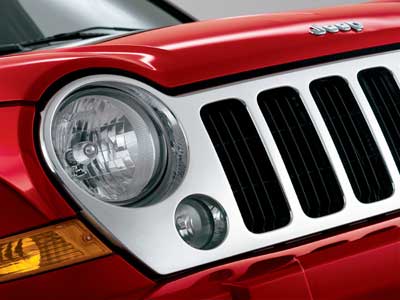
Camp Jeep, CA -- There were a host of new things to try and do at the first-ever Camp Jeep, in California, but for us, driving the new 2005 Jeep Liberty with its Common Rail Turbo Diesel engine was a must-do. The Camp Jeep event was all about Jeeps, after all, but this new offering from DaimlerChrysler is ground-breaking in the North American mid-size SUV market. With fuel economy a growing concern, Jeep engineers say the new powerplant will deliver four-cylinder fuel consumption while still providing V6 acceleration and eight-cylinder torque. Unlike diesels of the past that need to “warm up” with glow plugs, we simply turned the key of the Liberty to the on-position, and were underway. We expected quiet. It wasn’t -- certainly not as quiet as VW’s Tdi – but on the other hand, it wasn’t 18-wheeler, garbage-hauler noisy, either.
Page 2: Quiet engine
Unwanted noise and vibration limited the appeal of old diesel-powered vehicles. Jeep recognized that the engine was primarily responsible for unwanted buzzing and rattling, and therefore has added features to quiet the new mill. A noise-reducing engine cover, balancing shafts, an air induction resonator, and a torque converter turbine damper all contribute to quieter operation overall. This new unit displaces 2.8-liters in an inline-4 configuration. Power is rated at 160 hp. at 3,800 rpm and 295 lb.-ft. of torque at 1,800 rpm. With a 20.5 gallon tank and fuel economy estimated in the mid 20s predictions are for 22 city/27 highway, which compares to the gasoline Liberty at 20/24) and a driving range of close to 500 miles. Notable is an impressive 5,000 lb. of towing capacity, a result of the torque. (This is 2 and ½ times the capacity of the 4-cylinder gasoline-engined Liberty and equal to the 6-cylinder version, which gets 17/22 fuel economy, by comparison.) Fuel is delivered to the cylinders via direct injection at up to 24,000 psi. The injectors now burn fuel more efficiently, thereby reducing hydrocarbon emissions. Compared to diesels of the 1980s, this engine is approximately 60 percent cleaner. Diesels have also been criticized for their sluggish performance. Subsequently, Jeep has attached a turbocharger to provide the needed boost. A moveable vane inside varies the impact of the turbo – during launches it acts like a “small” turbocharger and increases low-end torque, while at higher revs it works like a “large” turbo and provides top-end power. The new 2.8 is also quick to start, needing only two seconds to warm up the ceramic glow plugs. We drove the new model on a somewhat rigorous “101 Off Road” course. Notable was its engine braking on steep hills and its overall handling, typical of other Libertys. All diesel engines are backed by a 5-speed automatic transmission with overdrive. Other engine options include a 150-hp. 2.4-liter inline-4 and a 210-hp. 3.7-liter V6, both powered by gasoline.
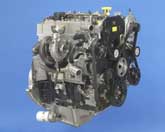
Page 3: Trims
Diesel engines are optional in both Sport and Limited model Liberty SUVs. Subtle exterior changes mark ’05 Sport models with a new body-color grille and better sills along the body sides. Standard features include a 65/35 split folding rear bench seat, keyless entry, a tilt wheel, and a CD player with six speakers. Limited models include a grille, body-side moldings, and side sills all finished in chrome. Fog lamps, body-color fender flairs, 17-in. aluminum wheels, a six-way power driver’s seat, nicer door panel trim, and tire pressure monitoring are also standard. Options include a tire pressure monitoring display, leather seats, heated front seats, a power front passenger seat, a DVD navigation radio, a six-disc CD player, satellite radio, UConnect hands-free communication, and an Off-Road package that includes tow hooks and skid plates. Jeep underpinnings All Libertys ride on fully-independent suspension and change direction via rack-and-pinion steering. The suspension is comprised of gas-charged shocks and stabilizer bars to maximize driveability under a variety of conditions. Four wheel disc brakes are standard, with ABS that includes Variable Brake Proportioning available. Two 4WD systems are available. Command-Trac, the standard fitting, includes a part-time transfer case that allows 2WD, 4WD High, 4WD Low, and Neutral. The optional system, Selec-Trac, uses a full-time transfer case that offers both part-time and full-time 4WD High. A center differential, included, features both high- and low-range locking capabilities.

Page 4: Safety
All Liberty diesels include multi-stage front airbags for the driver and front passenger that are engineered with an Occupant Classification System, which monitors positions and weights of passengers to tailor airbag deployment. Supplemental curtain airbags are also available to maintain the upper-body integrity of the vehicle’s occupants. During side-impact and rollover collisions, these can be especially effective. Communication and entertainment While the new diesel is certainly a respectable engineering feat, several electronic systems inside the cabin signal automotive progress as well. The navigation radio uses voice commands and a 4.2-in. display to guide you along the desired route. Data can be entered in a variety of ways, and the screen will display either a full map or a detailed section. Another device, the UConnect Hands-free Communication System, employs Bluetooth technology that connects a cellular phone to the factory-mounted voice receiver. Voice dialing and multi-phone recognition help drivers communicate safely and conveniently. Finally, SIRIUS satellite radio provides clear, commercial free music, news, and sports all day and night. Jeep covers the first-year subscription, when the option is chosen.
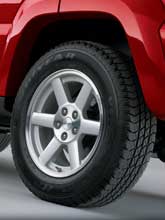
Page 5: Wrap
The question remains as to whether the Liberty Diesel is an option in the US market. Interestingly, a recent survey called the Consumer Acceptance of Alternative Power study done by global marketing firm J. D. Power and Associates concluded that many consumers would prefer a clean diesel engine to a hybrid gasoline/electric powertrain (such as the Toyota Pruis, Honda Civic and Ford Escape hybrids) because today’s clean diesels blend power, fuel economy and new emissions controls. While hybrids appeal to many because of their fuel economy and environmentalism, concern about hybrids ranged from worries about the longevity of powertrain batteries and a vehicle’s ability to accelerate. The Liberty diesel’s fuel is almost entirely free of sulfur and aromatics, is biodegradable and non-toxic. While more than 1,000 petroleum distributors carry the fuel and some 300 filling stations retail various blends of biodiesel, concerns for clean diesel-fueled vehicles center around the infrastructure for fueling, and the small number of models available currently in the U.S. DaimlerChrysler has been praised by the National Biodiesel Board for using biodiesel as the factory fillup for its Liberty diesel. Commercial fleets currently using biodiesel include a number of government agencies, such as the military, National Park Service, U.S. Postal Service, NASA, and other private companies and institutions, including Harvard and L.L. Bean.
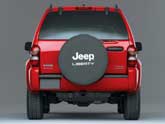
Page 6: FAQs
What type of diesel fuel does the Jeep Liberty Diesel use? The Liberty diesel’s fuel is almost entirely free of sulfur and aromatics, is biodegradable and non-toxic. While more than 1,000 petroleum distributors carry the fuel and some 300 filling stations retail various blends of biodiesel, concerns for clean diesel-fueled vehicles center around the infrastructure for fueling, and the small number of models available currently in the U.S.
What type of fuel economy can we expect from the Jeep Liberty Diesel? DaimlerChrysler engineers expect four-cylinder performance with V6 power and torque.
Is the Jeep Liberty Diesel more noisy than the gasoline version? Yes, because the diesel engine makes more noise. Jeep recognized that the engine was primarily responsible for unwanted buzzing and rattling, and therefore has added features to quiet the new mill. A noise-reducing engine cover, balancing shafts, an air induction resonator, and a torque converter turbine damper all contribute to quieter operation overall.
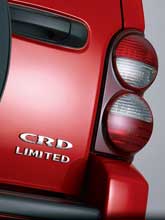
Page 7: Notes
Base price: $22,000 (estimated) Engine: 2.8-liter turbodiesel inline-4 (160 hp @3,800 rpm, 295 lb.-ft. @1,800 rpm) Transmission: 5-speed automatic Wheelbase: 104.3 in. Length: 174.4 in. Width: 71.6 in. Height: 70.2 in. Head/legroom: front: 40.7/40.8 in.; rear: 42.1/37.2 in. Hip/shoulder room: front: 57/56.5 in.; rear: 47.4/56.5 in. Curb weight, lbs.: 4,306 Fuel economy: 22 city/27 highway mpg Safety equipment: Four-wheel disc brakes with ABS; dual-stage driver and front passenger front airbags with occupant classification; optional supplemental curtain airbags; available tire pressure monitoring